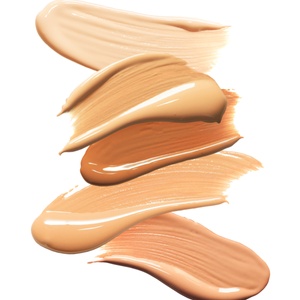Blog
Welcome to FaceForward
Get the scoop on all things beauty, wellness, and skincare.

While similar, CC cream and foundation have some key differences. What is a CC cream, and which should you pick?
“Color correction” cream, more commonly referred to as CC cream, is a relatively new cosmetic product that specializes in concealing uneven skin tones, blemishes, redness, blotchiness, and hyperpigmentation. Along with helping to reduce these skin imperfections, CC creams usually contain ingredients to provide additional skin health benefits and a more natural “no makeup” look.
CC cream is commonly used as an easy and effective way to blend skin tones and even out complexion. However, it differs from foundation in providing additional benefits, and it has the ability to work as a primer or a foundation.
The CC in CC cream literally stands for color correction and is the primary recognized attribute of CC cream. Unlike other creams, CC creams contain pigments that are specifically targeted to blend discolorations and uneven skin tones.
SPF stands for “sun protection factor” and is an effective way to gauge the amount of time a product will adequately protect skin against damage from ultraviolet radiation.
One of the primary benefits of using a CC cream is that most of them contain at least a low level SPF. While it might not be enough to protect your skin during long outings in the sun, CC creams with SPF offer much more protection than traditional foundations that don’t include any SPF.
Protecting your skin from UV damage is the single most important thing you can do for your skin as you age. UV damage over many years is a primary cause or wrinkling and premature aging of the skin.
Along with providing protection against sun damage, CC creams also frequently contain ingredients like hydrolyzed collagen and other peptides that help to firm skin and reduce the appearance and development of wrinkles.
One of the most important things that you can do to keep your skin healthy is to keep it hydrated. CC creams often contain moisturizing ingredients alongside their color correcting qualities.
Foundation, sometimes referred to as primer or concealer, is a cosmetic typically applied to the face before using other makeup. It’s not a requirement for other makeup, but is commonly used to smooth the skin surface as a "base" and enhance the appearance of other products applied over top.
Whether it takes the form of a liquid, cream, or powder, foundation covers minor skin blemishes, blends skin tones, and creates an even base before applying makeup.
Due to the higher pigment concentration in most foundations, this full coverage makes blending skin tones easier and more comprehensive.
Since it’s meant to completely cover your face, you can often change the natural coloring of your face more comprehensively than with a CC cream. Despite being a little thicker than other options, you can build on foundations and apply further makeup as desired.
Foundations often come in a variety of finishes. Common finishes include matte, satin, and dewy.
In so many ways, CC creams and traditional foundations are alike. They both offer various options for blending skin tones while concealing imperfections and blemishes.
They’re also thin enough for other makeup to be applied on top of them.
The most critical differences that separate CC creams and foundations can be boiled down to these three properties:
As its name suggests, CC cream is primarily used to color correct uneven skin tones. This is essentially the same primary function as a traditional foundation.
But CC creams also usually help to moisturize the skin, protect it from sun damage, and reduce the appearance and formation of wrinkles.
Traditional foundations generally don’t include additional ingredients for these purposes, as they’re primarily used for cosmetic reasons.
Foundations are typically heavier and thicker than CC creams, containing more pigmentation than CC creams. They usually provide a more substantial coverage for a broader range of skin tones while offering multiple choices for shades and finishes.
While both of these options provide full coverage, CC creams are more commonly associated with the “no makeup” look.
In other words, it’s often more obvious that you’re using a traditional foundation than lighter and more transparent CC creams.
Depending on what you’re trying to do, CC creams can absolutely replace foundation.
The benefits of using a CC cream give it an edge over using a traditional foundation for many people.
The main issue with switching to a CC cream is that it might not be able to cover up severe blemishes or hyperpigmentation. CC creams are often like a light version of standard foundation, only with extra skin care benefits.
Using a CC cream with a foundation can provide the benefits of both worlds, though this isn’t frequently done.
CC cream is light enough to work under foundation and help keep your skin moisturized and protected.
The foundation that you apply over top can provide a fuller coverage and make it easier to blend more difficult skin tones and blemishes.
Ultimately, the best option for you will depend on what you're looking to get out of your skincare routine. CC creams are generally better for skin protection and minor coverage and a "less makeup" look, while foundation is better for full coverage and provides more options.
For most people, finding beauty products they love and trust just takes some trial. Start with a CC cream and see if it works for you!
Has the sun protection factor had its day? | NCBI
Hydrolyzed Collagen—Sources and Applications | NCBI
The Role of Moisturizers in Addressing Various Kinds of Dermatitis: A Review | NCBI
Hyperpigmentation Therapy: A Review | NCBI
This article is intended for informational purposes only and should not be considered medical advice.
Consult a healthcare professional or call a doctor in the case of a medical emergency